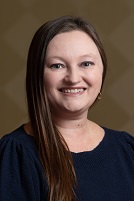It’s not a subject easily discussed, and it affects such a small portion of the population that most people don’t know it exists. But for those affected by it, it can be devastating. It is problematic sexual behavior (PSB) in children between the ages of 7 and 12, behavior that is not only age-inappropriate but is generally predatory in nature. And until last year, there was nowhere for parents and caregivers to turn to for help in Tarrant County. That changed last year when Lena Pope, an 80-year-old Fort Worth nonprofit devoted to helping children and families via counseling and education programs, opened the doors on Project SAFeR. Through Project SAFeR (Safety and Family Resiliency), counselors aim to fill the gap in social services for children and families dealing with PSB by offering specialized therapy for both the child and the adults to modify the predatory behavior. It is the only program of its type in Texas.
Some of the behaviors considered problematic are those in which it is harmful, or potentially harmful, to the child or others; in which the child coerces or forces others to participate in sexual behavior; and when the sexual behavior is between children of significantly different ages or developmental abilities.
Todd Landry, Lena Pope’s executive director, said that until the project got off the floor, “families had to face the challenge [of PSB] with minimum or no support. And it is a very difficult challenge to deal with. But I believe these are behaviors that can be changed. The children need to be taught new behaviors, and the parents need to know how to help curb the problematic behavior.”
Read More
The National Center on the Sexual Behavior of Youth (NCSBY) proudly celebrates Carrie Jenkins, who was honored with the “Above and Beyond” Award during the Dee Norton Child Advocacy Center’s 15th anniversary celebration of its Problematic Sexual Behavior (PSB) Therapy Program.
Learn more about the celebration here: Dee Norton’s 15-Year PSB Celebration
The event, 15 Years of Trailblazing Treatment, marked a significant milestone in improving compassionate, evidence-based care for youth and families affected by problematic sexual behavior. It was also a wonderful moment to recognize the outstanding dedication of professionals like Carrie, whose leadership and commitment have shaped the field.
Carrie Jenkins, MA, LPC/S, is a Licensed Professional Counselor Supervisor, NCSBY Consultant, PSB-CBT™ Trainer, and has long shown excellence in her work.
See Carrie Jenkins Trainer Profile here: Carrie Jenkins, MA, LPC/S
Through years of collaboration, mentorship, and diligent effort, Carrie has played a key role in ensuring that clinicians and community partners are well-equipped to provide high-quality, evidence-based care. Through her leadership, she shows her ability to adapt to complex challenges and maintain a steadfast focus on youth and family well-being. Her ability to connect with teams through training has made her a valued leader and colleague across the PSB-CBT Network.
The “Above and Beyond” Award reflects Carrie’s ongoing contributions not only to the Dee Norton PSB team but also to the national implementation of PSB-CBT treatment. Her work embodies the very principles the anniversary event celebrated — innovation, compassion, and commitment to helping children and families thrive.
NCSBY is pleased to join Dee Norton Child Advocacy Center in applauding Carrie’s extraordinary achievement and continued impact in the field. Her leadership continues to inspire clinicians, advocates, and communities working to promote healing and hope.
Congratulations, Carrie — and thank you for going above and beyond every day!
About NCSBY:
The National Center on the Sexual Behavior of Youth provides training, resources, and support to improve interventions for youth with problematic sexual behavior and to promote the well-being of affected children and families.
Read MoreKids and young teens with problematic sexual behaviors now have a place to turn to for help in Tarrant County.
Read MoreStarts: Sep 15, 2025 09:00 (ET)
Ends: Sep 17, 2025 17:00 (ET)
ATSA Annual Conference
https://www.atsa.com/2025-atsa-conference/
ASPAC 33rd Colloquium
Starts: Jun 22, 2026 09:00 (CT)
Ends: Jun 26, 2026 17:00 (CT)
Where: Sheraton Hotel, 500 Canal Street, New Orleans, LA 70130
Read MorePerspectives are powering what’s possible through engaging presentations and critical conversations taking place at APA 2025.
Starts: Aug 7, 2025 09:00 (CT)
Ends: Aug 9, 2025 17:00 (CT)
Where: American Psychological Association (APA), 750 First St. NE, Washington, DC 20002
Read More
The initiative is specifically focused on reaching families who currently fall between the cracks, i.e., those who get referred to Child Protective Services for well-being needs rather than safety concerns that do not warrant investigation of neglect or abuse (from ktvz news site)
Read MoreA New Federal Bill Could Protect Against (AI) Deepfakes
Internet Child Safety and Taylor Swift are associated as catalysts challenging this type of AI pornography
This bill would include charges for creators, and distributors, while promoting child online safety
Read More
43rd Annual Research and Treatment Conference (ATSA Conference)
October 16-18, 2024
San Antonio, TX
Read More